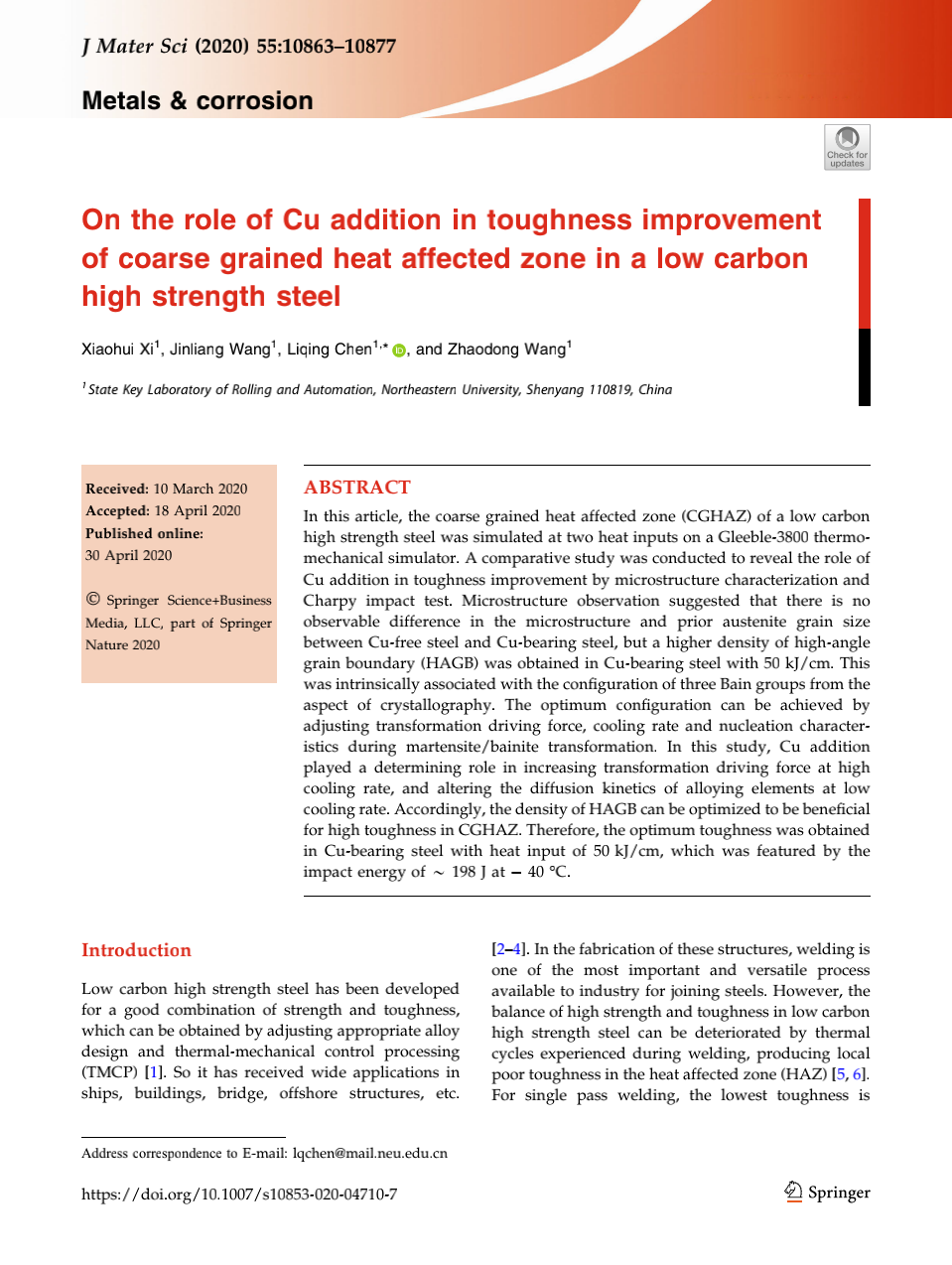In this article, the coarse grained heat affected zone (CGHAZ) of a low carbon high strength steel was simulated at two heat inputs on a Gleeble-3800 thermo-mechanical simulator. A comparative study was conducted to reveal the role of Cu addition in toughness improvement by microstructure characterization and Charpy impact test. Microstructure observation suggested that there is no observable difference in the microstructure and prior austenite grain size between Cu-free steel and Cu-bearing steel, but a higher density of high-angle grain boundary (HAGB) was obtained in Cu-bearing steel with 50 kJ/cm. This was intrinsically associated with the configuration of three Bain groups from the aspect of crystallography. The optimum configuration can be achieved by adjusting transformation driving force, cooling rate and nucleation characteristics during martensite/bainite transformation. In this study, Cu addition played a determining role in increasing transformation driving force at high cooling rate, and altering the diffusion kinetics of alloying elements at low cooling rate. Accordingly, the density of HAGB can be optimized to be beneficial for high toughness in CGHAZ. Therefore, the optimum toughness was obtained in Cu-bearing steel with heat input of 50 kJ/cm, which was featured by the impact energy of ~ 198 J at − 40 °C.
